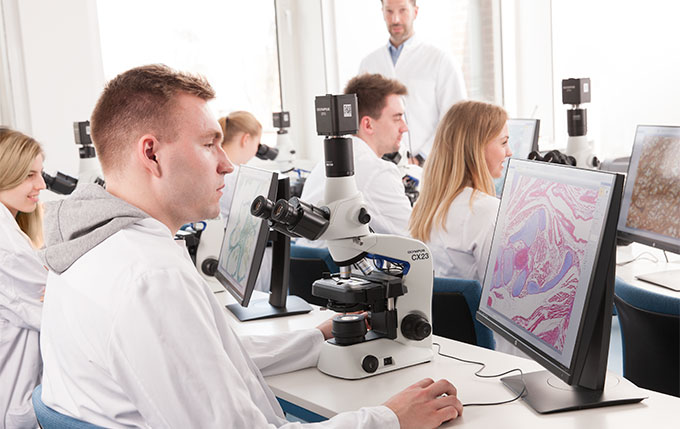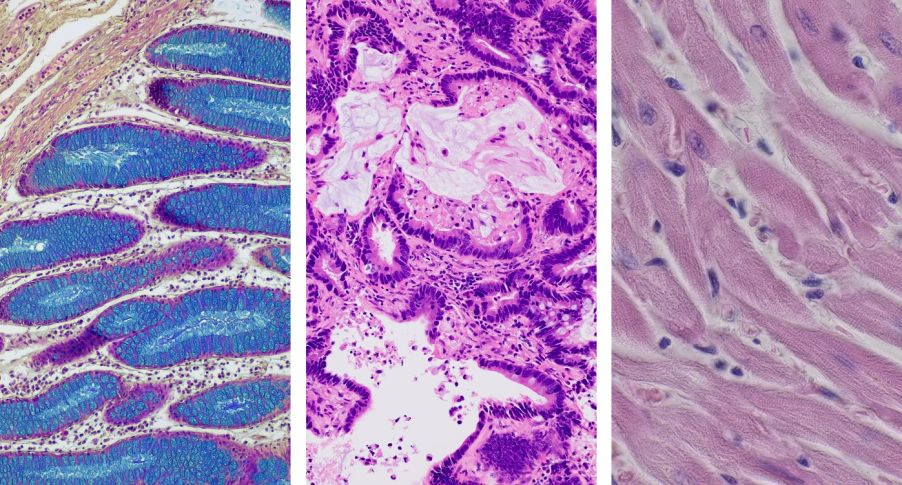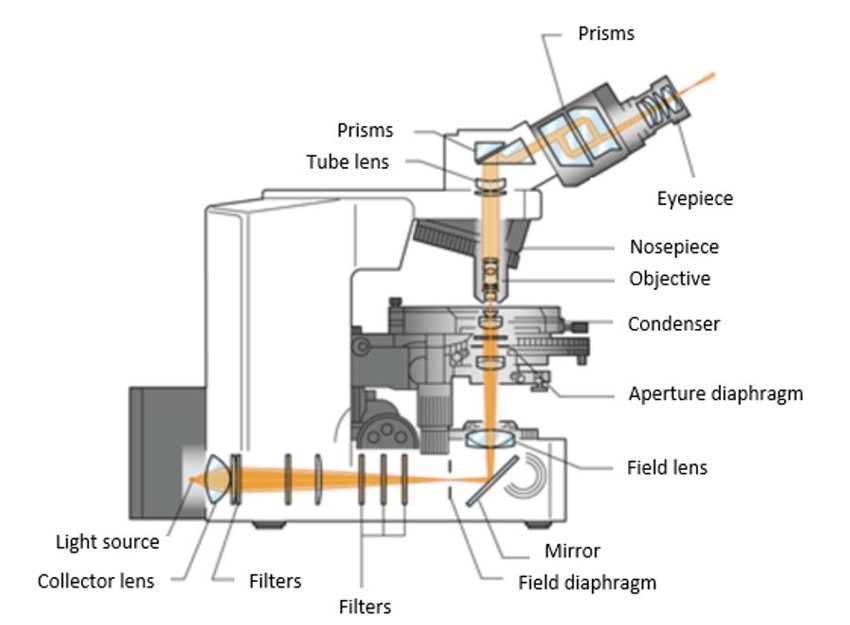Brightfield microscopy is one of the most common types of microscope observation methods used in biology and medicine. It is a simple and reliable method that enables scientists to study and visualize samples in detail. In this post, we will discuss what brightfield microscopy is, how it works, and its advantages and limitations.
How Does Brightfield Microscopy Work?
Brightfield microscopy, also known as a compound light microscopy, uses light to illuminate a sample and create an image. The sample is placed on a glass slide and illuminated by a light source, typically a halogen lamp or a light-emitting diode (LED) light. The light passes through the sample, and an objective magnifies the image and projects it onto an eyepiece or a camera. The sample appears dark against a bright background, hence the name “brightfield.”
What Components Are Necessary for Brightfield Microscopy?
A brightfield microscope typically has several basic components, including:
|
Diagram of a typical brightfield microscope |
Why Is Brightfield Microscopy a Good Imaging Technique?
Brightfield microscopy is a simple and affordable technique that produces high-resolution images. It is used as a general imaging technique for observation and inspection of specimens across industries. Brightfield microscopy is a good imaging technique for several reasons:
1. Simplicity
Brightfield microscopy is a simple and straightforward technique that does not require special sample preparation or staining. This makes it an easy technique for users of all skill levels to use.
2. Observe a wide range of samples
Brightfield microscopy can be used to study a wide range of samples, from cells and tissues to minerals and fibers. This makes it a versatile tool for many fields of research and industry.
3. Affordability
Brightfield microscopes are relatively inexpensive compared to other types of microscopes. This makes it accessible to many laboratories, schools, and universities.
4. Widely available
Brightfield microscopy is a commonly used technique, so there are a wide variety of brightfield microscopes available. Most microscope manufacturers have brightfield microscopes in their product line. This also makes it easier to find replacement parts or to get help or advice from other users.

What Are the Challenges of Using Brightfield Microscopy?
The main limitation of brightfield microscopy is that it only works well for samples that have high contrast with their backgrounds. For example, it is difficult to study samples that are transparent or the same color as the background. Additionally, samples that are not properly prepared or stained may not be visible under a brightfield microscope.
Key Takeaways about Brightfield Microscopy
The brightfield microscope is a reliable and versatile imaging tool that is widely used in biology, medicine, and other fields. It is simple to use, produces high-resolution images, and is accessible to many laboratories.
If you are interested in learning more about brightfield microscopy or are in need of a high-quality microscope for your research or teaching lab, please contact our team of experts to help you find the perfect microscope to suit your needs. We can help answer any questions you may have! Don't hesitate to contact us today and take the first step toward advancing your research with brightfield microscopy.
Related Content
Stereo Microscope Primer: Transmitted Light Observation Methods



